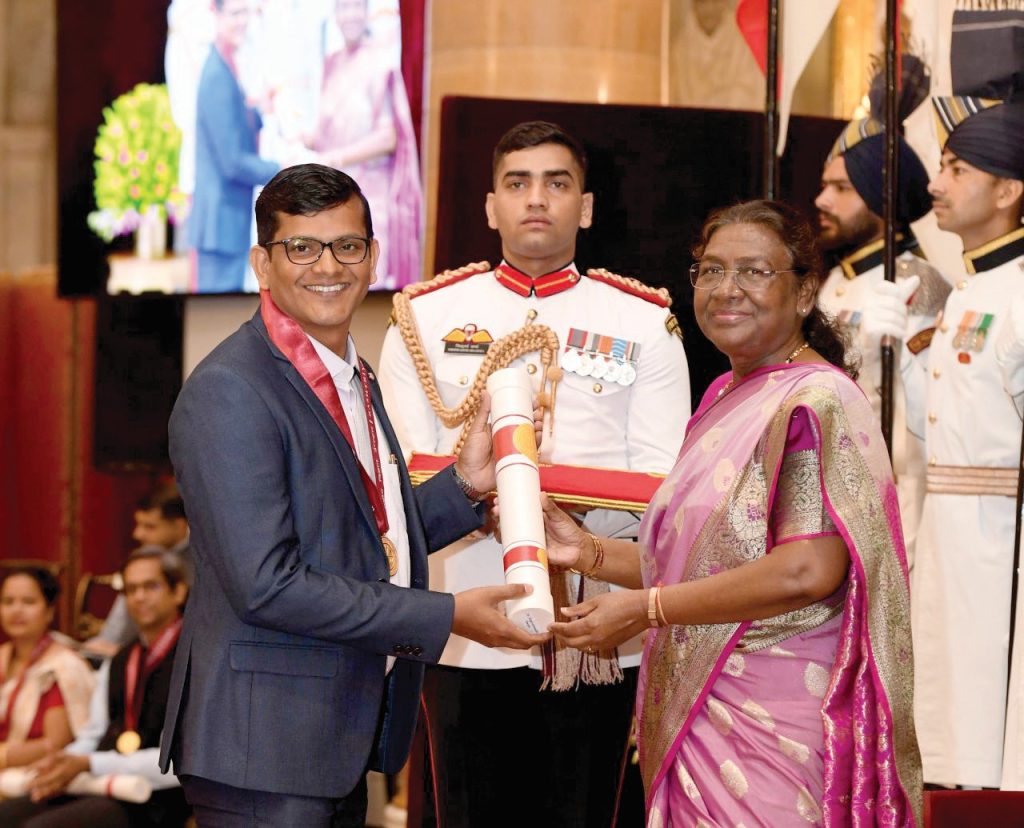YOUNG SCIENTIST/ Dr DIGENDRANATH SWAIN
Dr Digendranath Swain, a senior researcher at the Vikram Sarabhai Space Centre (VSSC), Thiruvananthapuram, under the Indian Space Research Organisation (ISRO), has recently been conferred the prestigious Vigyan Yuva Shanti Swarup Bhatnagar Award. Presented by President Droupadi Murmu, the award recognises his remarkable contributions to the field of space science and technology. As a leading figure in structural engineering, Dr Swain has played a pivotal role in ensuring the reliability and success of India’s ambitious space missions.
At the heart of Dr Swain’s work lies his expertise in structural engineering for rocket components, with a special focus on experimental mechanics and innovative non-destructive testing (NDT) methods. As part of the structural engineering division at VSSC, his team is responsible for the rigorous testing and qualification of launch vehicle (LV) components, which are critical to ISRO’s rockets, as even a minor failure can jeopardise an entire mission. His contributions have been instrumental in ensuring the structural integrity of key launch systems for various missions, including the LVM3, SSLV, TV-D1, RLV-TD, PSLV, and GSLV programmes.
Dr Swain’s work becomes significant in the context of India’s upcoming space exploration milestones. His team is actively involved in supporting the ambitious Gaganyaan mission, India’s first human spaceflight programme, and the next generation launch vehicle (NGLV) project. Given the heightened demands of such missions, where human safety and technological precision are paramount, his contributions will play a defining role in their success.
One of Dr Swain’s most groundbreaking achievements is the development of IMPRESS (Indian-Make Portable and Real-time Shearography System), a patented non-destructive testing tool designed specifically for rocket hardware. Non-destructive testing is essential for identifying potential weaknesses or defects in materials without causing damage, making it indispensable for aerospace engineering.
Dr Swain’s academic journey provides a fascinating glimpse into the interdisciplinary nature of his expertise. He completed his doctoral research at IIT Kanpur, where he specialised in growth biomechanics, an area seemingly unrelated to aerospace engineering. His research focused on modelling the development of soft and hard tissues, a field requiring advanced knowledge in solid mechanics.
Interestingly, this foundation has proven invaluable in his work at ISRO. The principles of growth biomechanics have allowed him to devise innovative models for understanding the behaviour of materials under stress, which is directly applicable to the testing and validation of rocket components. Furthermore, his earlier work on tissue modelling has opened avenues for potential applications in ISRO’s human spaceflight programmes, particularly in understanding the effects of microgravity on living tissues. This could be critical for long-duration missions, such as the Gaganyaan project and the Bharatiya Antariksh Station (BAS).
In the high-stakes world of space exploration, structural engineering is a cornerstone of mission success. Rockets are single-use vehicles, and their components must perform flawlessly throughout the mission lifecycle. A single weak link can lead to catastrophic failure.
Dr Swain and his team have consistently ensured that ISRO’s launch vehicles meet these rigorous standards. Their efforts have been crucial in the structural qualification of multiple missions, including LVM3, which successfully launched Chandrayaan-2; PSLV, ISRO’s reliable workhorse; and RLV-TD, India’s experimental reusable launch vehicle.
Dr Swain’s earlier research on tissue modelling also holds promise for studying the effects of microgravity on human physiology. By mathematically modelling the growth and adaptation of tissues, Dr Swain’s work could help address challenges related to long-term space habitation, a key focus of the Bharatiya Antariksh Station initiative.
By combining his deep academic knowledge with practical innovation, he has advanced ISRO’s capabilities in rocket design and testing.
His patented tools and methodologies have not only improved efficiency but also reduced risks associated with space exploration.










